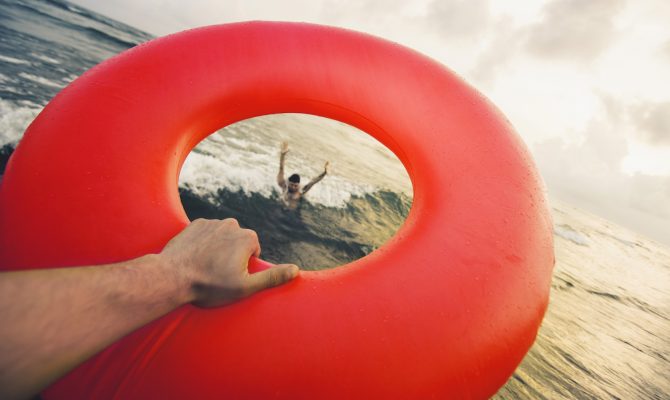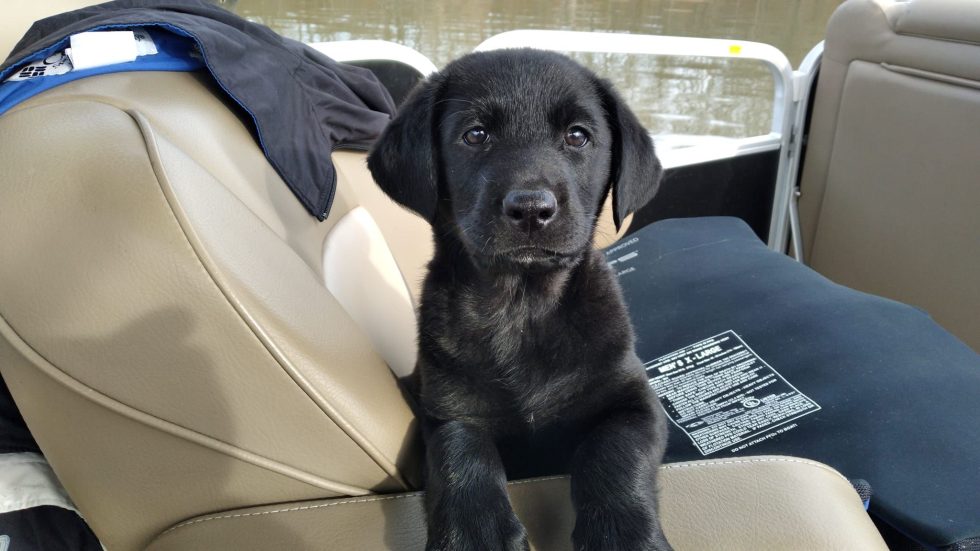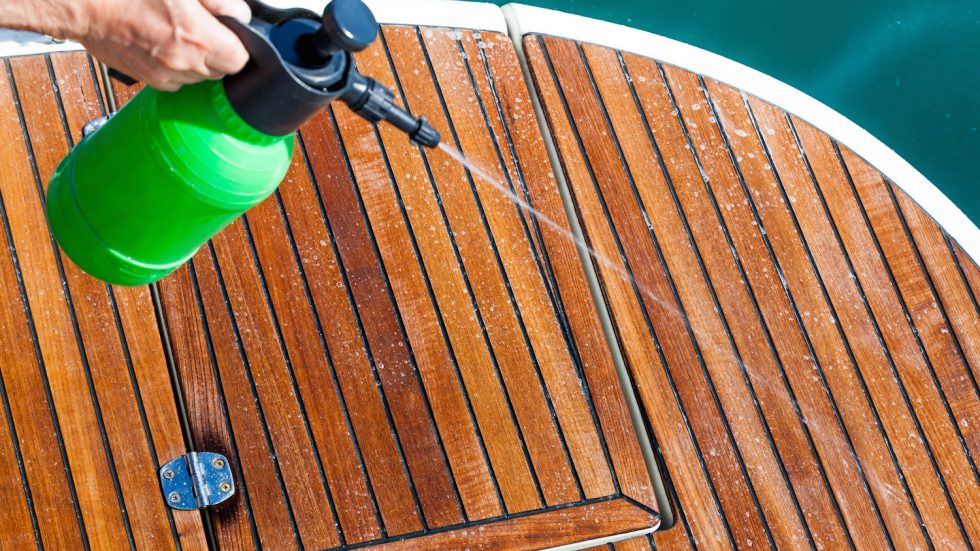And that pretty much says it all. Statistically, the odds of survival on the water diminish the moment someone goes overboard. Add injury, shock, not wearing a PFD and being in somewhat less-than-ideal physical shape, and those odds spiral downward. Therefore, the first man overboard (MOB) procedure is to reduce the possibility in the first place.
In the Navy, such discussions are called “situational awareness,” which basically means recognizing that you’re on board a vessel and acting as such — don’t move as quickly as you would ashore, think before you act, and have at hand necessary tools and materials in advance rather than needing to distract yourself by rooting around.
Regarding PFDs: The days of the bulky “Mae Wests” have gone the way of Titanic-era cork corsets. There’s really no excuse not to don one of the modern, lightweight, self-inflatable versions whenever you’re aboard.
Splashdown!
OK, in spite of it all — splash! What do you do first? Well, you can’t rescue anyone when they can’t be seen. The job of the person who first spots the MOB is just that — to take aim with a pointed finger and never remove his or her gaze. It can be difficult to keep someone in view even in calm water. Add a chop or seas, and they can be goners.
Next, in quick succession, we toss the victim a ring buoy or other floating object, hit the MOB switch on the GPS and put out the Mayday on the VHF (and until the person is on deck again it’s always a Mayday). Don’t forget to broadcast your position. Then, begin maneuvering for retrieval.
As far as getting the victim back aboard, we need to position the boat so that hauling him/her on deck becomes a possibility. Ideally, the vessel should be placed downwind or down-current of the person in the water, so he or she floats towards the boat. The boat should be placed so that it’s across the person’s drift; the victim arrives amidships, not to the bow or stern.
Yes, that swim platform would be an ideal method of retrieval, but the person should be safely secured first — by lines bent to floatation devices, life rings, etc. — then moved aft to be hauled aboard.
A quick caution about swim platforms: They can be evil. Eyeball a platform in any kind of chop and watch how it smashes the water. Now imagine someone who is incapacitated getting on its downside. If preparing to assist someone onto a swim platform, the person in the water must be under total control by rescuers until they’re safely aboard.
Back on Board
Once the person is alongside, they should be secured (as previously stated) before attempting to get them on deck. We don’t want them drifting away. All too often, the greatest challenge is to haul someone on deck. People are heavy! There are handy commercial devices for lifting a MOB back on board, and it’s a good idea to have one on hand and be familiar with its use.
Sometimes we can’t get the victim back aboard; in that case, the person needs to be safely secured alongside and reassured until help arrives. Need I mention that while all this is occurring great care should be taken regarding the props?
Well, that was cut and dried; a well-trained and efficient captain retrieves the unfortunate wet guest. But wait, what happens when you or I go overboard? It happens to the best of us.
If you’re like the great majority, odds are you’re cruising with family or friends. We, the skippers, have made sure that everyone can hit the MOB button on the GPS, read the lat/long and access Channel 16 to broadcast the Mayday and position. Right?
Your guests/crew should know how to at least throttle back and throw the engines in neutral (sailors’ guests or crew should know enough to free the sheets and head into the wind), thus giving us a fighting chance to swim back to the boat.
Then again, who other than you or I is capable of maneuvering the vessel to get you or I alongside and back aboard if we’re incapacitated?
We’ve trained our “first mate” in the proper use of a boat, haven’t we? I’m just asking.
Author: Stu Reininger is a regular contributor to HeartLand Boating magazine




